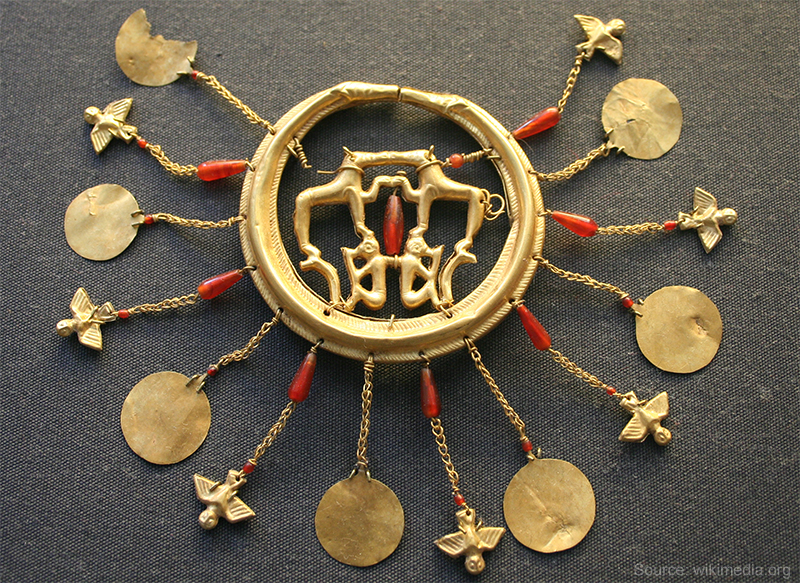
Aegina Treasure
Average reading time — 3 minutes
Rise of the Minoan civilization
Aegina or Aigina (Greek: Αίγινα) — the “island of goats” on the shores of the Saronic Gulf.
This picturesque island was once bustling with life. The ancient Greek philosopher Aristotle wrote that the population of Aegina was half a million people. Many were engaged in agriculture, seafaring and trade. Historians claim that Aegina actively competed with Athens, it was there where for the first time in ancient Greece people began to mint coins and cast the famous Aegina copper.
During the Minoan period, trade between the inhabitants of Crete, the Aegean and the Mediterranean settlements was widespread. Thanks to prosperous merchants, the Minoan cultural influence (c. 2600 to 1100 BC) became dominant throughout Greece.
Mystery of Greek excavations
The Minoan gold treasure found on the Greek island was called the “Aegina Treasure”.
Gold items were discovered in the tomb in 1891. Unfortunately, there is no unequivocal data on who found them and under what circumstances.
The treasure is securely stored in the British Museum and is still shrouded in mystery. They were and still remain a mystery, because no other ancient jewelry is similar to the items from this unique treasure trove.
Aegina (Aigina) Treasure
Date: 1850-1550 BC
Period: Minoan
Materials: gold, lapis lazuli, amethyst, quartz, cornelian and green jasper
The mysterious collection of jewels consists of two pairs of earrings, three diadems, a pendant, a bracelet, a gold cup, four rings, plaques and gold plates.

In the photo: an amazing pair of gold earrings made by the talented jeweler from Aegina.
Fourteen short chains are attached to the hoop with a two-headed snake, on which graceful golden discs are hung, alternating with figurines of owls. Inside the ring are four beasts: perhaps these are two greyhounds that tower over two monkeys.
In Minoan culture, it was customary for zoomorphic creatures to be depicted in pairs. Apparently, they performed the functions of protectors of people and were considered the messengers of the gods.

In the photo: a gold pendant of exceptional and rare beauty from the mysterious collection.
Another precious and elaborate object of the ancient masters is a pendant with a figurine of a Cretan deity flanked by two geese. The sacred idol is depicted between the “cult horns” of bulls — a frequently observed religious symbol in Crete.
Golden language of jewelry
The British Museum purchased much of the Aegina Treasure in 1892 from the London firm Cresswell Brothers.
Undoubtedly, they are of the greatest value and cause admiration. The discovered jewels reflect not only the religious ideas of the people of that time, but also have a symbolic meaning. Gold is the valuable metal, with the help of which the ancient masters expressed their thoughts and spoke in a unique language of jewelry.
Read also the article:
Gold of Olympia: the statue of Athena Parthenos





